There seems to be a trend developing on the continent whereby once highly successful teams are now struggling at the wrong end of the table. One such club is 20-time Swiss Champions Basel, who are currently rooted to the bottom of the Swiss Super League, three points from safety.
Following an unsatisfactory start to the season, which included elimination from the Europa Conference League during the qualifying stages to Kazakhstan outfit Tobol, Timo Schultz was dismissed from his duties. Heiko Vogel took over but only lasted four league games in charge following a miserable run of form in which the Swiss side failed to register a single point.
Not yet a third of the way through this campaign, Basel recently announced their third managerial appointment of the season in Fabio Celestini. A risky choice considering in his last head coach position, Celestini partly oversaw Sion’s relegation to the Swiss Challenge League last season. Considering their current plight, the Swiss national will no doubt have a challenging task in steering Basel to safety.
In this tactical analysis, we will provide an analysis of Basel’s season so far and highlight the tactics that have contributed to their struggles favoured by Schultz and Vogel. We will further highlight the issues that Celestini must address if Basel is to have any chance of survival.
From bad to worse
Basel contested the Europa Conference League semi-finals last season, eventually losing out to Serie A side Fiorentina; the Swiss side has reached the last 16 of the Champions League on four occasions. Such European adventures must feel like a distant memory to their fans now, as last month, the club announced there was no goal of the month award due to the team being unable to find the back of the net in October.
During Vogel’s second stint as manager, Basel failed to score in his entire reign and conceded 10 in four games.

The table shows how Basel’s form deteriorated under Vogel as their goals against per match rate increased by 16.8% compared to Schultz’s tenure. Moreover, Basel’s attacking threat was non-existent under Vogel as they failed to score.
During Schultz’s time in charge, although Basel’s goals against-per-match rate was smaller than during Vogel’s tenure, the Swiss side was still shipping goals at an alarming rate. Their goals-against-per-match rate was the worst in the division during Schultz’s reign.
However, interestingly, Basel’s goals per 90 rate was commendable during Schultz’s reign.
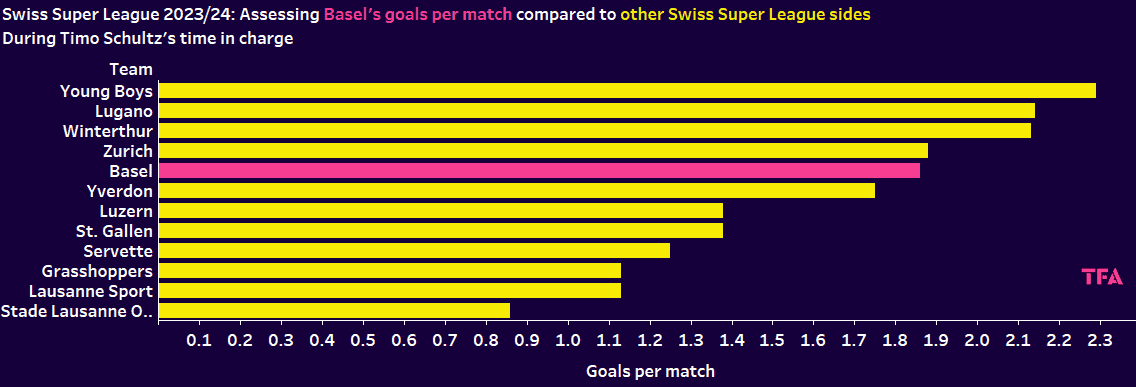
The bar chart shows that only four Swiss Super League sides scored more goals per game during Schultz’s time in charge. It is, therefore, apparent that Basel’s defensive issues were the leading cause for concern under Schultz and, ultimately, contributed to his dismissal.
Vogel failed to change the defensive fortunes of the former Swiss champions. Given the goalscoring statistics under Schultz, it begs the question of why Basel’s attacking credentials declined so markedly.
October goal drought
As well as failing to score in October, Basel’s expected goals during this time was 2.66, much lower than an expected goals tally of 15.43 at the earlier stages of the season. This would suggest that they have been a much less attacking threat recently.
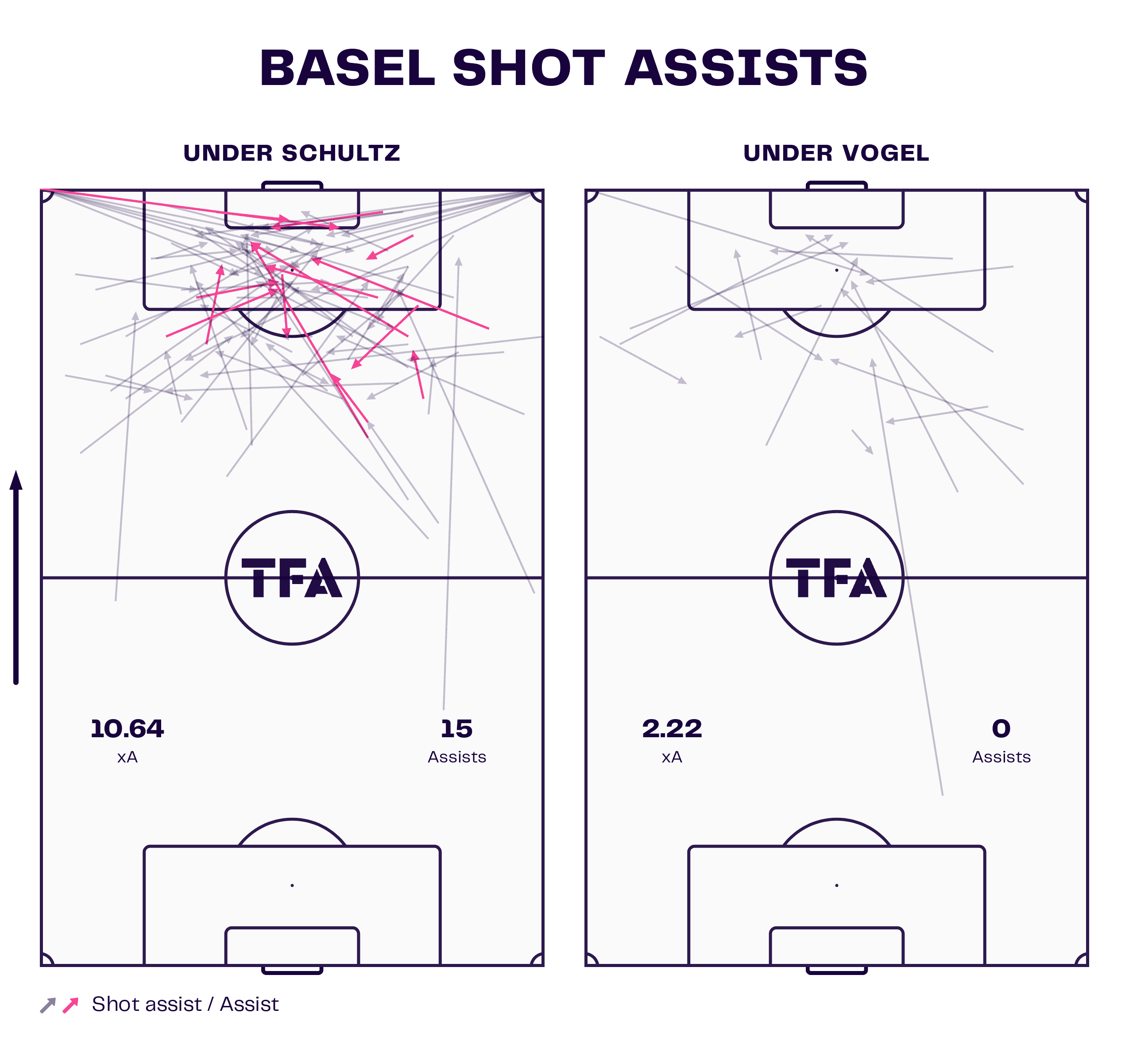
The graphic testifies how Basel created more goalscoring opportunities in all competitions, particularly from corners, under Schultz. A feat they only managed once during October under Vogel. Recently, Basel’s deliveries from set pieces have been poor and often cleared with ease by the opposition.
Basel’s lack of attacking threat under Vogel was somewhat surprising, given they averaged 53% possession per match last month.
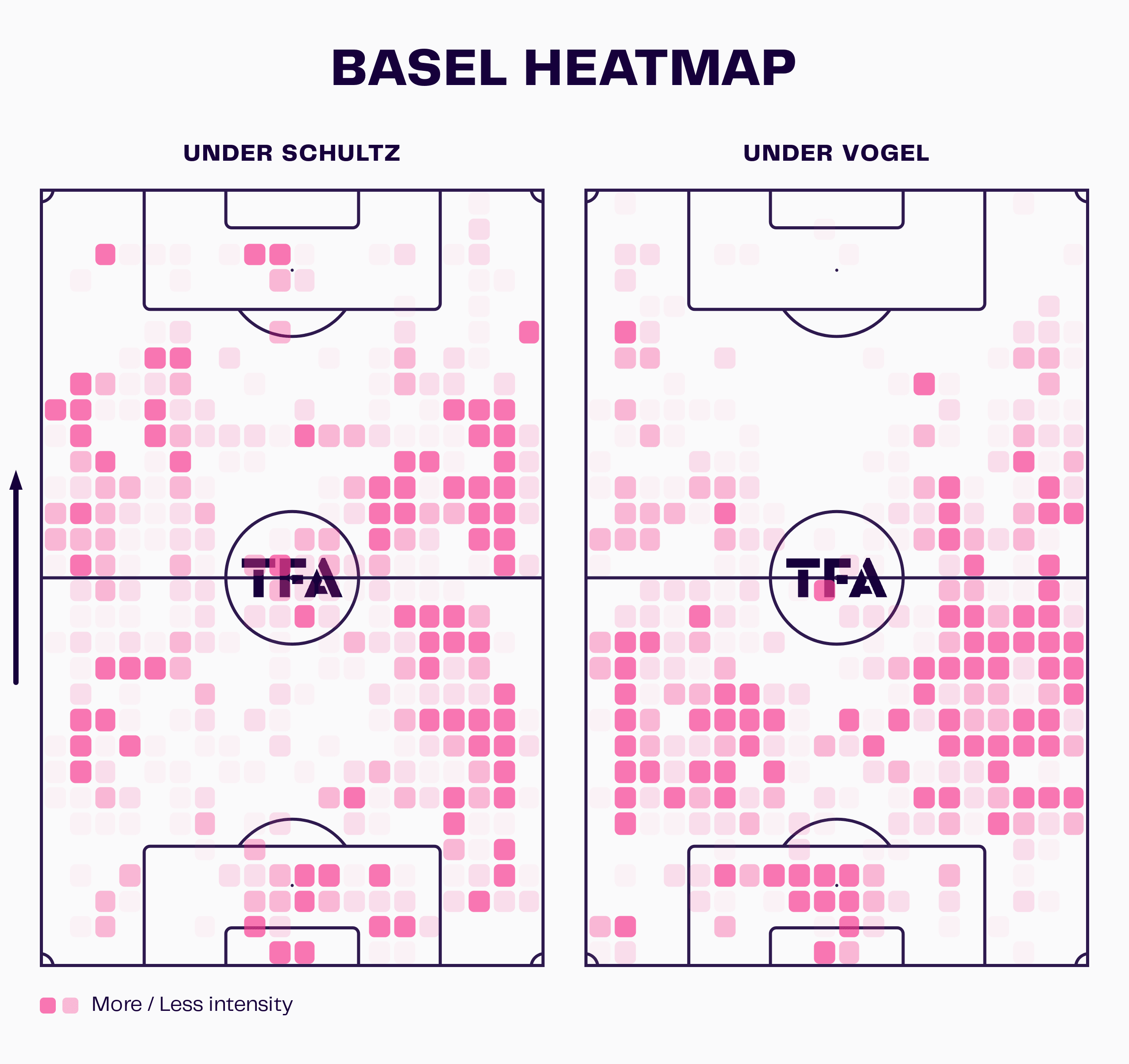
The heatmap shows despite slightly edging possession overall during Vogel’s reign, Basel failed to make the advantage count. Basel seemed to have spent most of that possession rooted in their own half.
Although Vogel experimented with a different formation in each fixture he oversaw, a constant in Basel’s performances was that they dominated the play. However, the Swiss side was too content in passing the ball around the defence and seemed devoid of ideas in transitioning to the attacking phase.
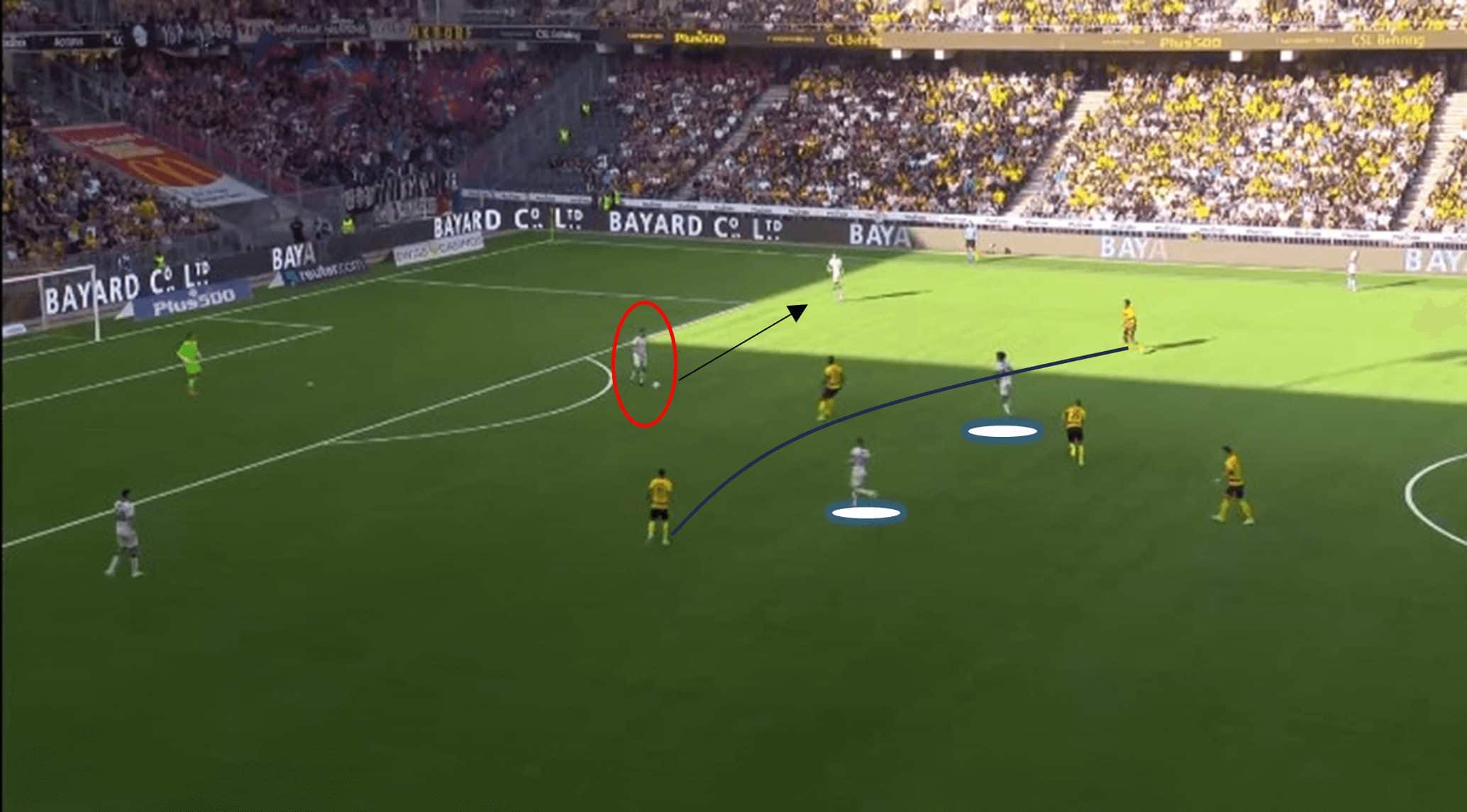
In the match still, it is shown how Basel have struggled when the opposition has marked the double-pivoted midfielders. Basel have lacked inventive passing, and in this case, instead of trying to utilise the width of the pitch, the ball is passed across the defence.
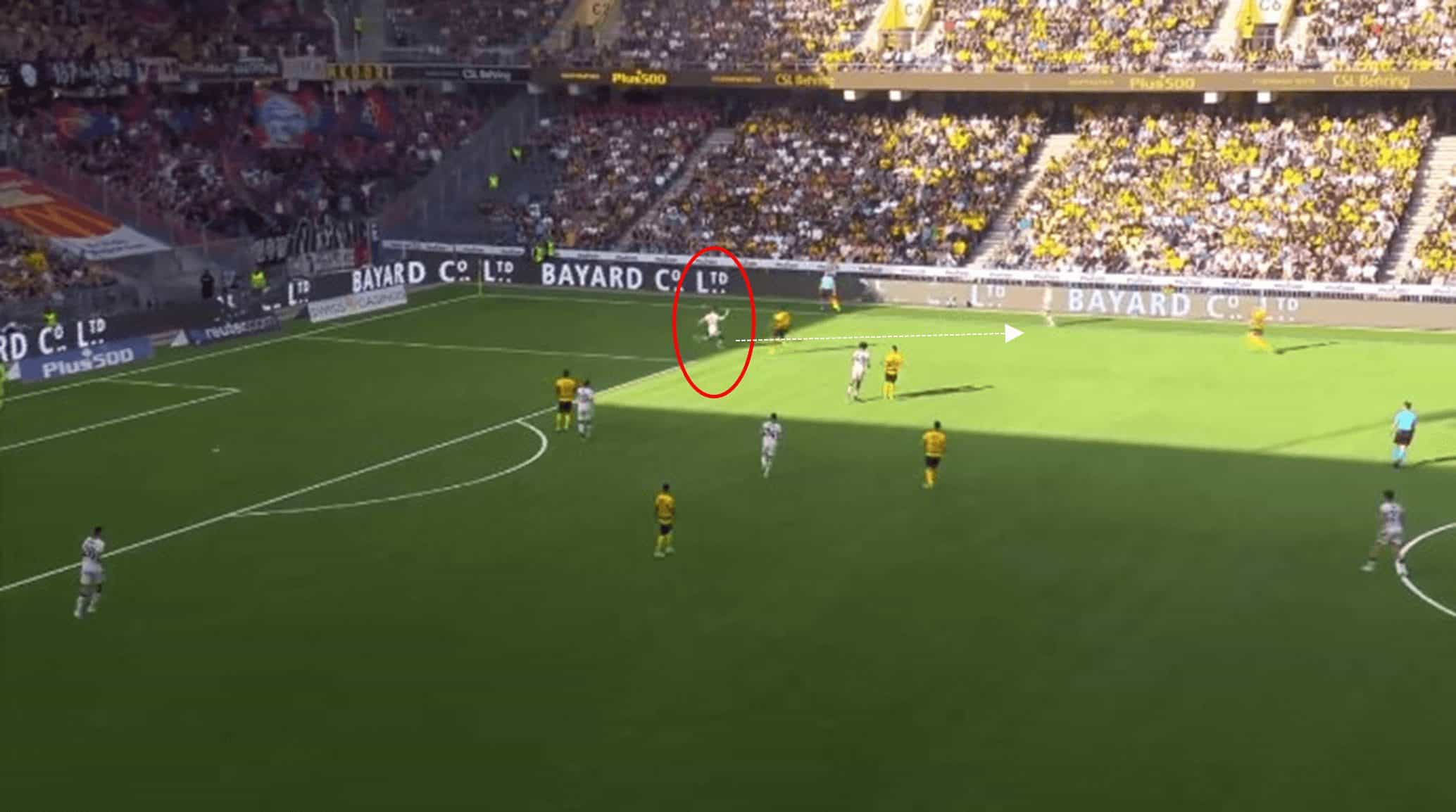
However, Young Boys increased pressure on the Basel backline upon passing across. Basel lacks calmness on the ball and, instead of playing ahead to the left-hand side, attempts to play long, but the advancing Young Boys attacker blocks the pass to go out for a goal kick.
Celestini did oversee a 2-1 victory over Yverdon in his first game in charge in the latest round of fixtures and has, therefore, already ticked off one item on his to-do list: stop the goal drought. In the match against Yverdon, Basel had 42% possession; their only other victory in the league this season came against Winterthur with 44% possession.
The possession statistics suggest they are more effective when they allow their opponents to dominate the ball. Basel have quick, young attackers, and when they can play directly, they attack to good effect as they often like to commit players forward in the attacking phase of play.
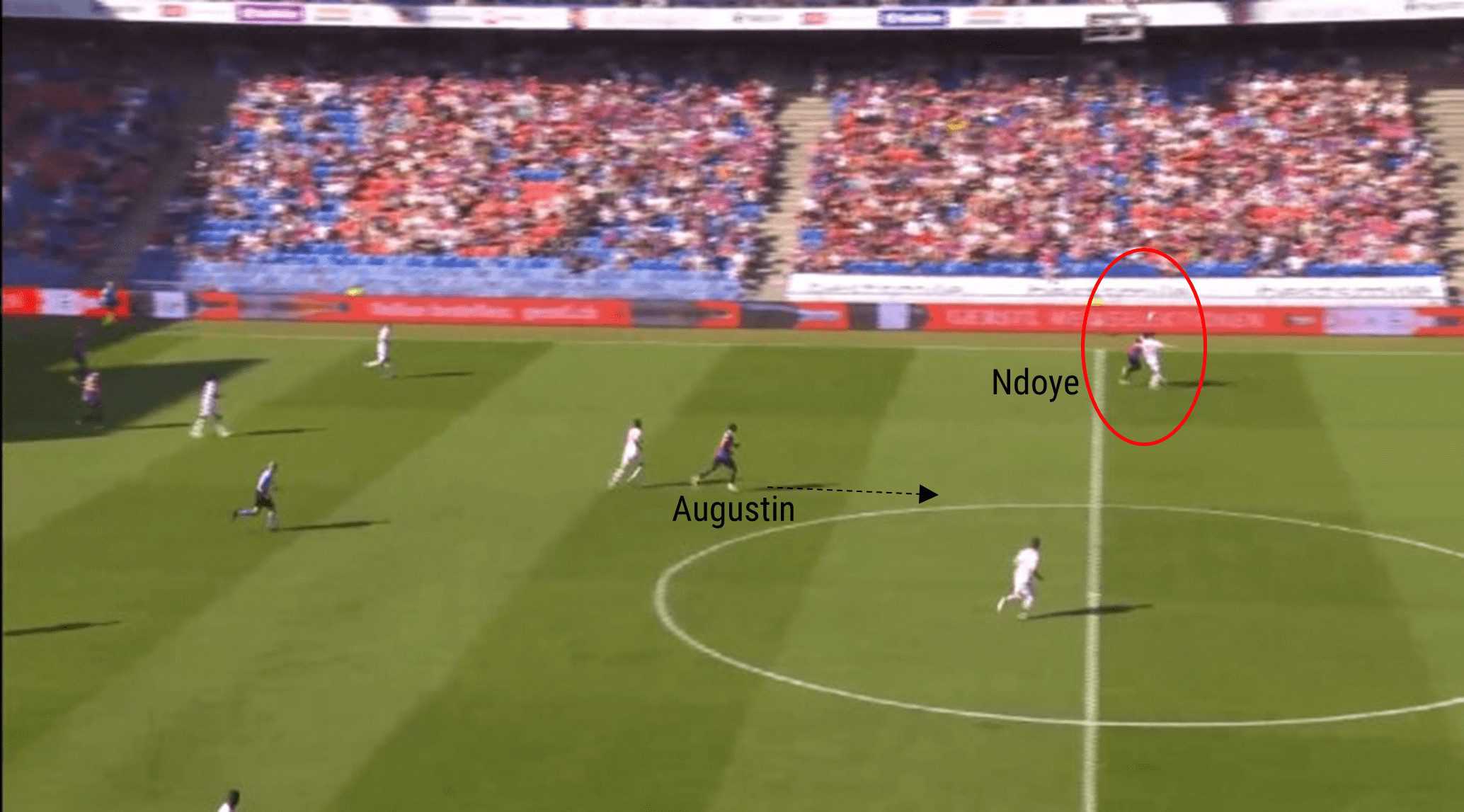
Basel have cleared the ball long, and Dan Ndoye wins the battle with the opposing defender.
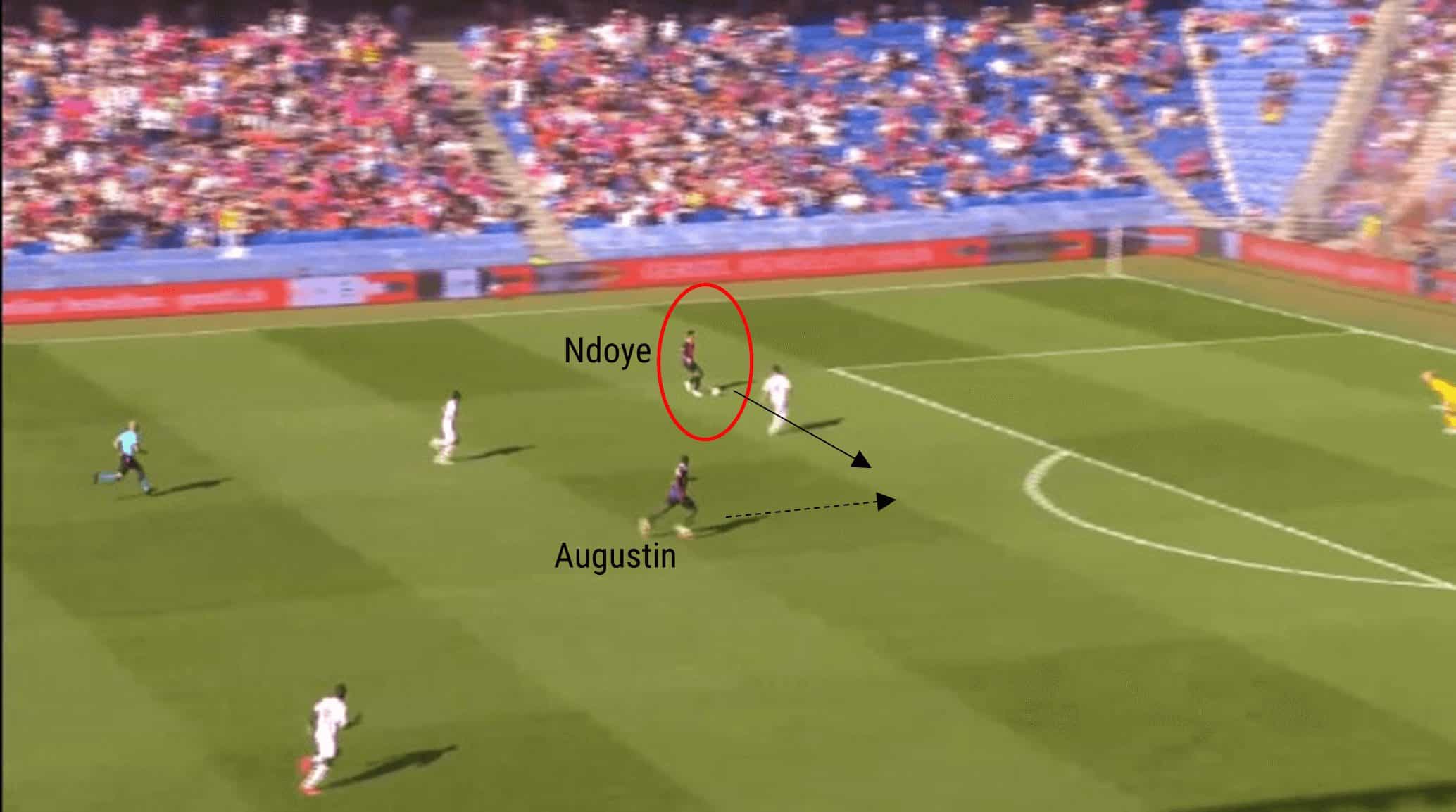
Ndoye beats the opposition for pace and advances towards the goal before slipping the ball towards Jean-Kévin Augustin, who has equally outpaced the opposition’s defence.
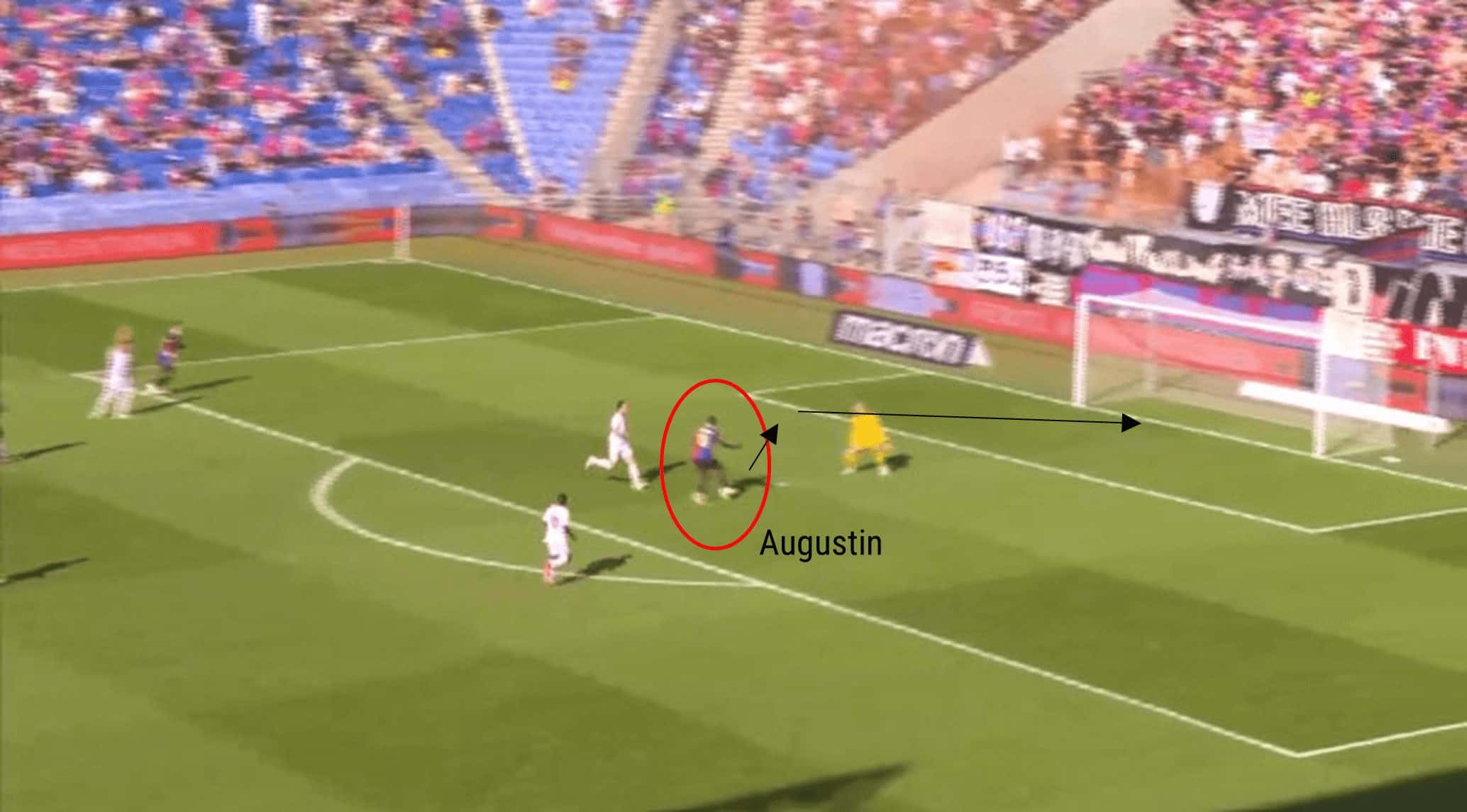
Augustin shows composure to go around the goalkeeper and slot the ball into the empty net. It is noticeable the level of confidence Augustin had here, and it was this confidence that Basel lacked under Vogel.
During Vogel’s tenure, when Basel could get forward, they would commit players forward, but the end product was wasteful.
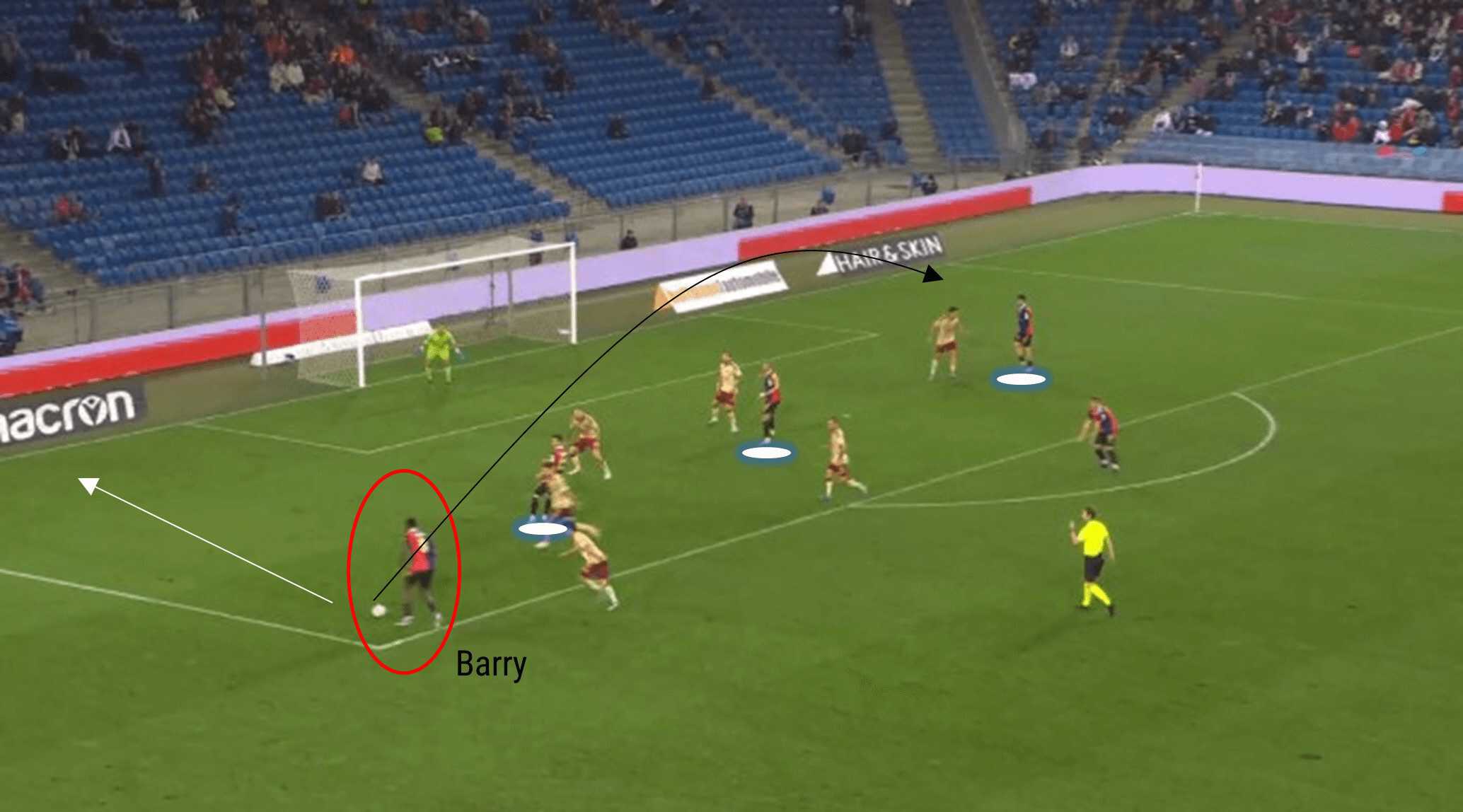
Thierno Barry is in possession on the left side of the penalty area with options in the box. However, the ball played across is too deep, bypassing all of his teammates. Barry lacked composure as he even had space to run towards the byline and play a dangerous low cross into the six-yard box.
As the goal drought persisted, the lack of confidence in the final third became evident for the Swiss side.
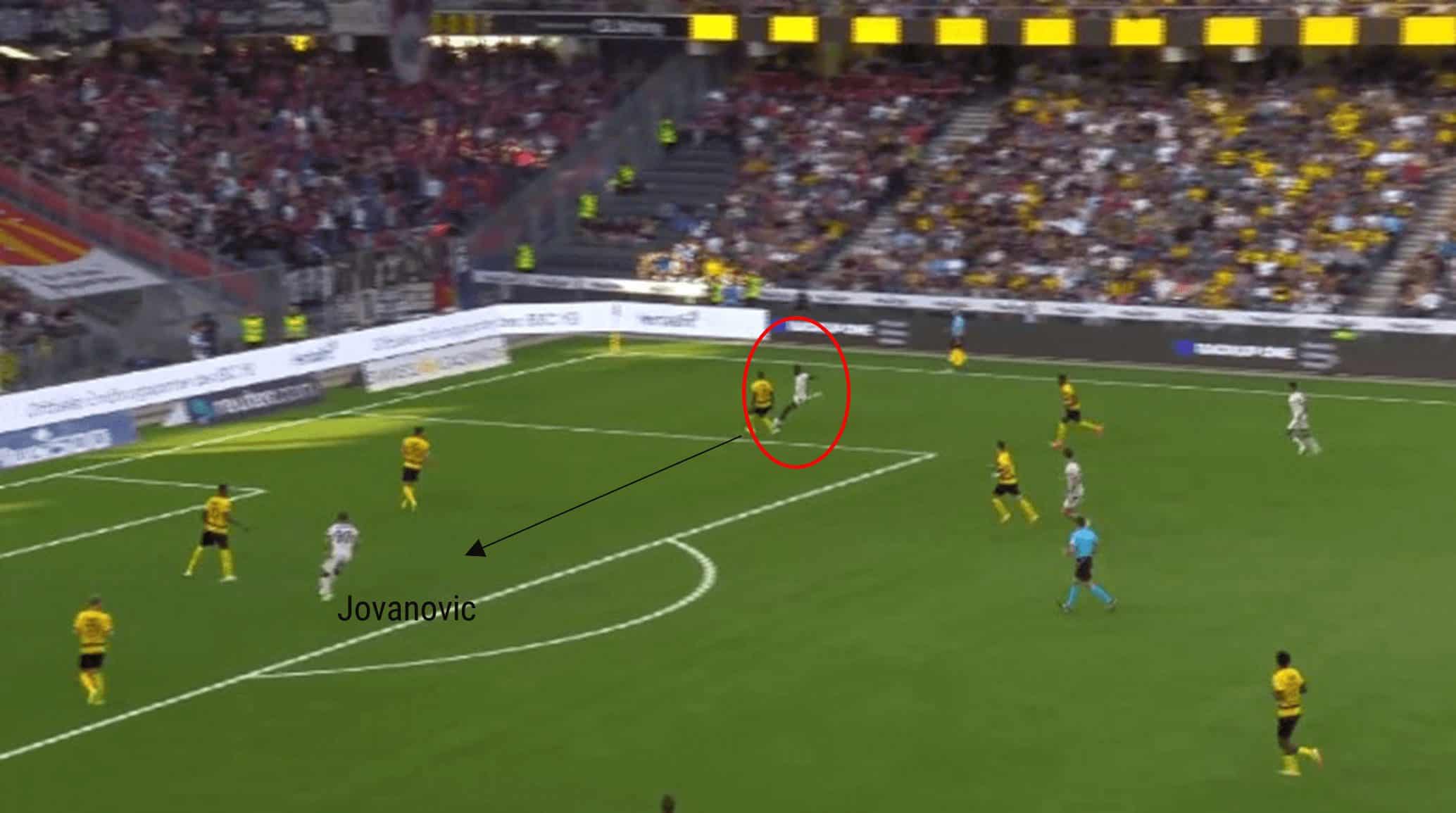
The ball is being played into the penalty area towards the forward, Đorđe Jovanović.
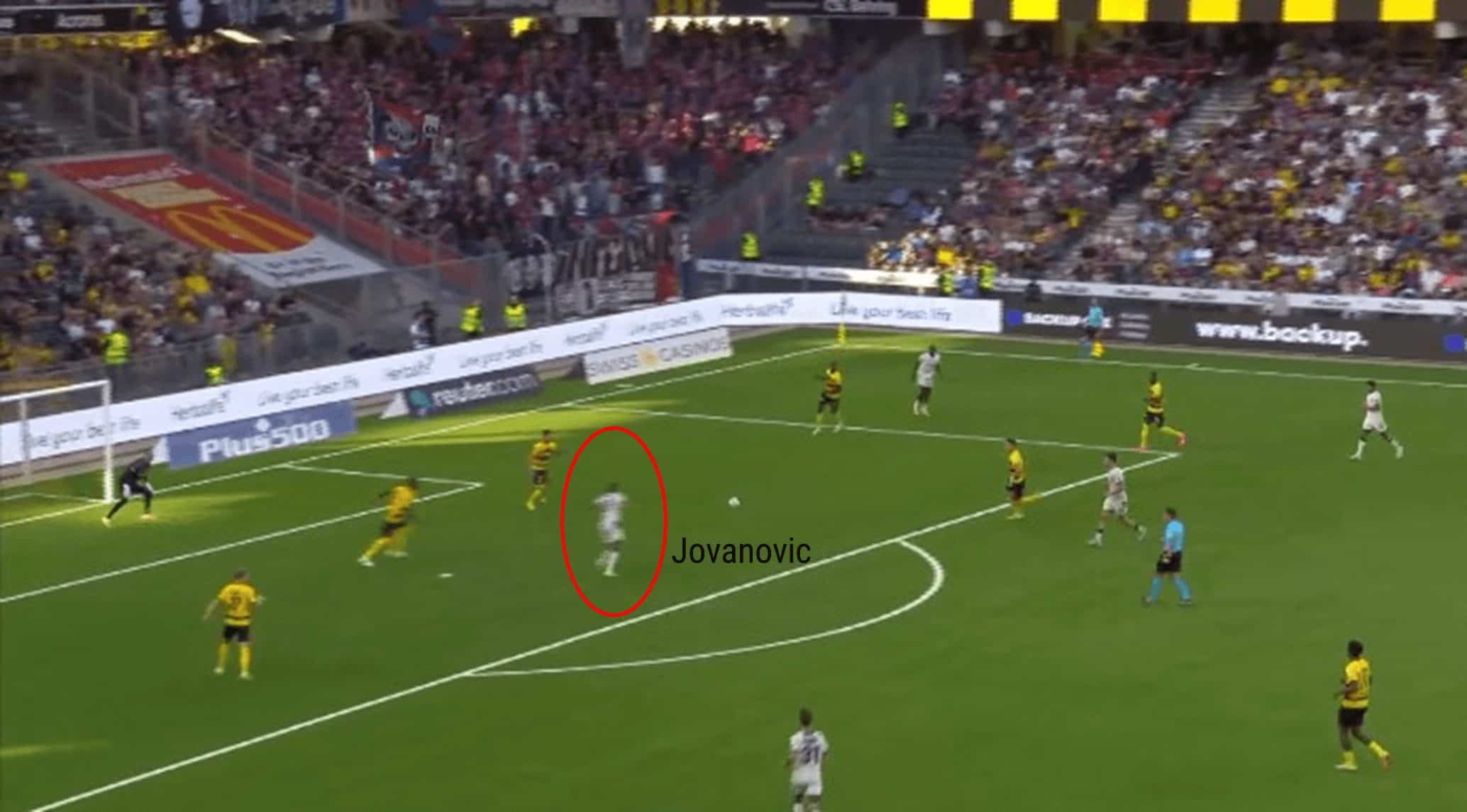
The ball is slightly behind the forward, but instead of taking a touch, Jovanović rushes to take a strike at goal, missing the target. Considering the space the forward had, an extra touch may have been beneficial. Jovanović, a summer signing from Maccabi Tel Aviv, is undoubtedly keen though to make an impact at his new club but has so far struggled for goals in the league.
Basel are a young side with plenty of exciting prospects, but in difficult times like these, the lack of confidence and composure has been telling. The St. Jakob Park side needs to start being more direct with their play to put pressure on the opposition’s defensive line.
Leaking goals
Regardless of the manager, Basel’s weakness has been their defence this campaign. In the modern game, the defence often starts from the front.
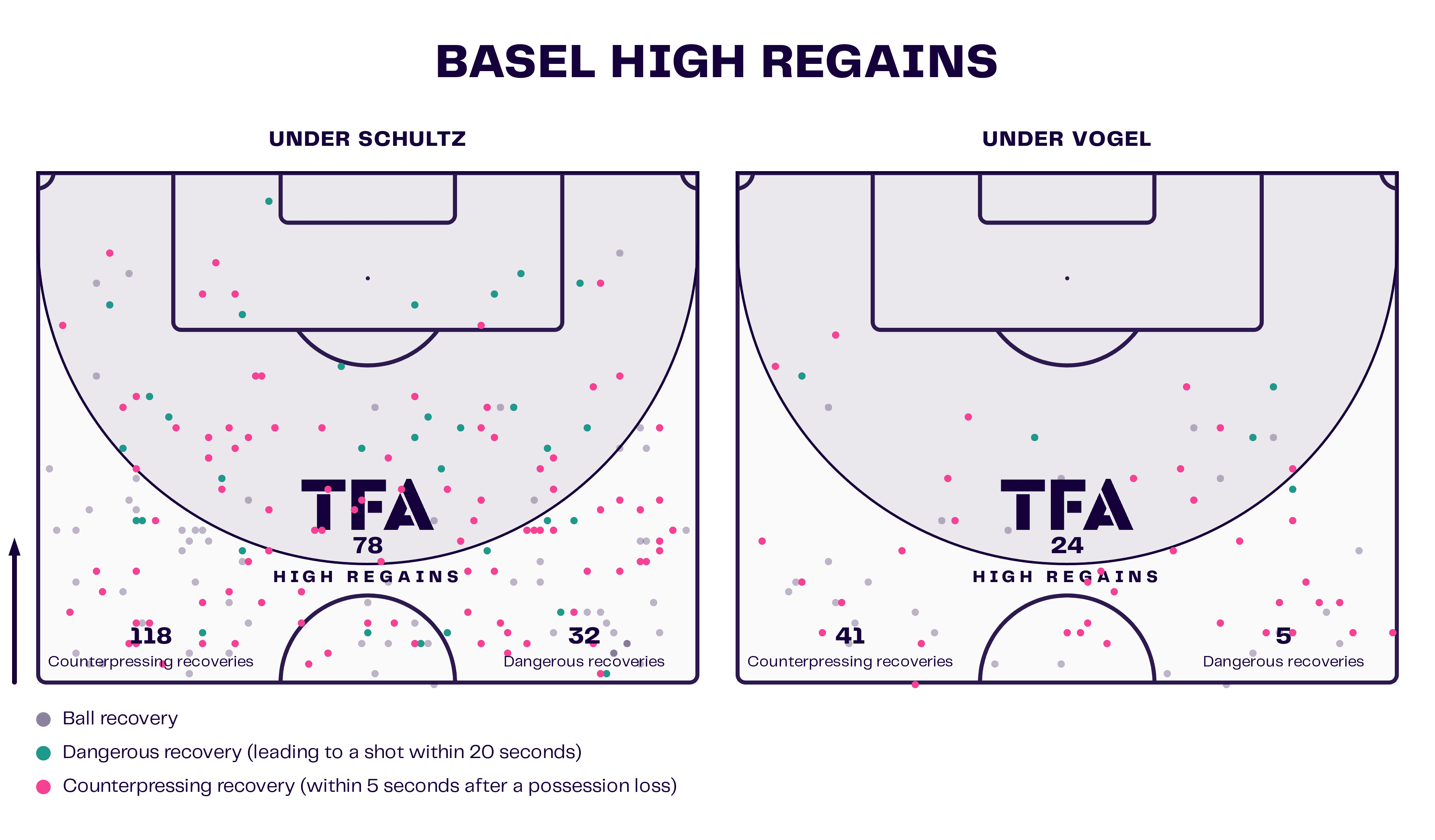
Under Vogel, Basel regained possession higher up the pitch less frequently than under Schultz. In all competitions at the early stages of the season, Basel had 7.1 high regains per match and 10.7 counterpressing recoveries per match. These values are higher than the six high regains per match and 10.3 counterpressing recoveries per match last month.
Across all three managers in the Swiss Super League this campaign, Basel has averaged 7.7 high regains per 90 and 11.3 counterpressing recoveries per 90. In contrast, Zurich has averaged 7.9 high regains per match and 14.5 counterpressing recoveries per match in the Swiss Super League this season; Young Boys has averaged 9.1 high regains per match and 16.3 counterpressing recoveries per match in the league.
Therefore, Basel has been less effective with their press in comparison to the sides they should be theoretically challenging for the title.
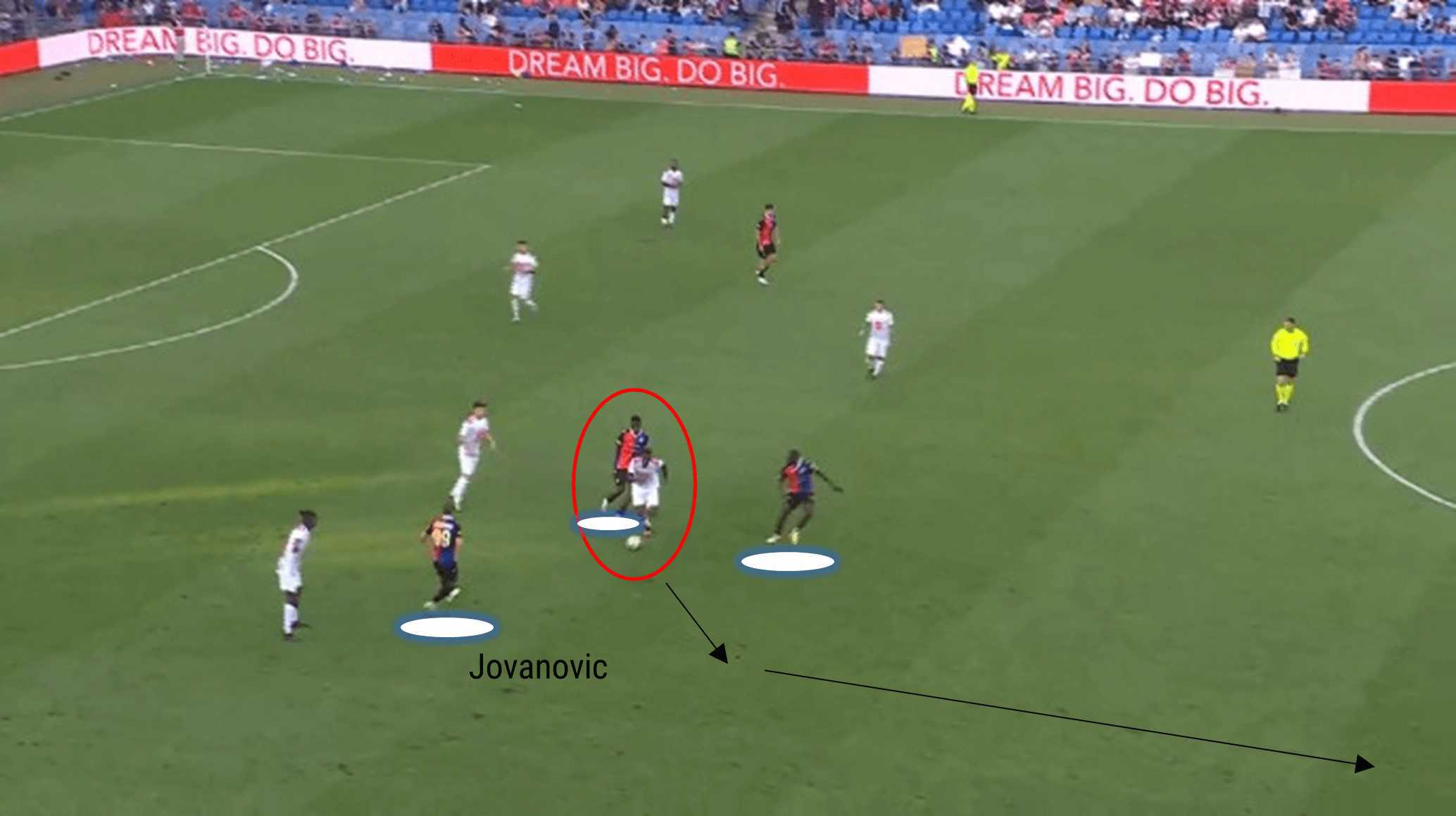
Stade Lausanne Ouchy have possession, and despite three Basel players surrounding them, the opposition are able to come away with the ball. The incoming tackle by Jovanović is tame.
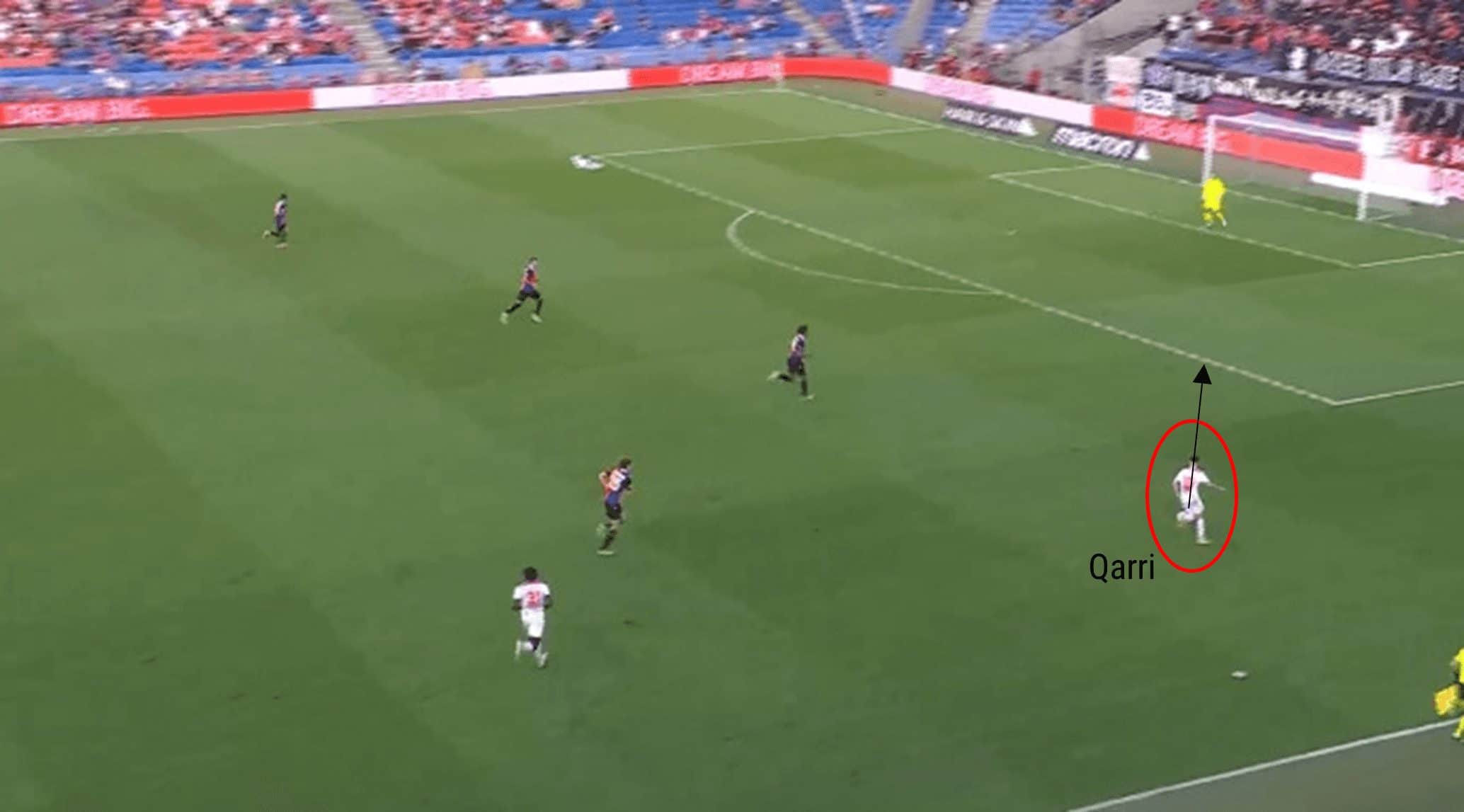
The ball is played down the right-hand channel, where Mergim Qarri has acres of space to exploit. Qarri runs into the penalty area before inverting past the incoming defender to score for Stade Lausanne Ouchy. It is shown here that the forward press has been timid. Stade Lausanne Ouchy subsequently took advantage.
The St Jakob Park side has lacked continuity in defence this season. Although Schultz generally favoured the 4-2-3-1 formation, he, like Vogel, was not averse to switching up formations. Basel has lined up in a 3-4-1-2 formation on several occasions this season.
The majority of the time this season, Basel has started with either Arnau Comas, Finn Van Breemen or Adrian Barisic in central defence. The average age of these defenders is just 21.67 years old. Moreover, Van Breemen and Barisic are both in their debut seasons for the club. Such a lack of experience may prove costly to Basel’s survival hopes.
Comas, Van Breemen and Barisic all lined up in a back three against Luzern, and a lack of organisation was evident.
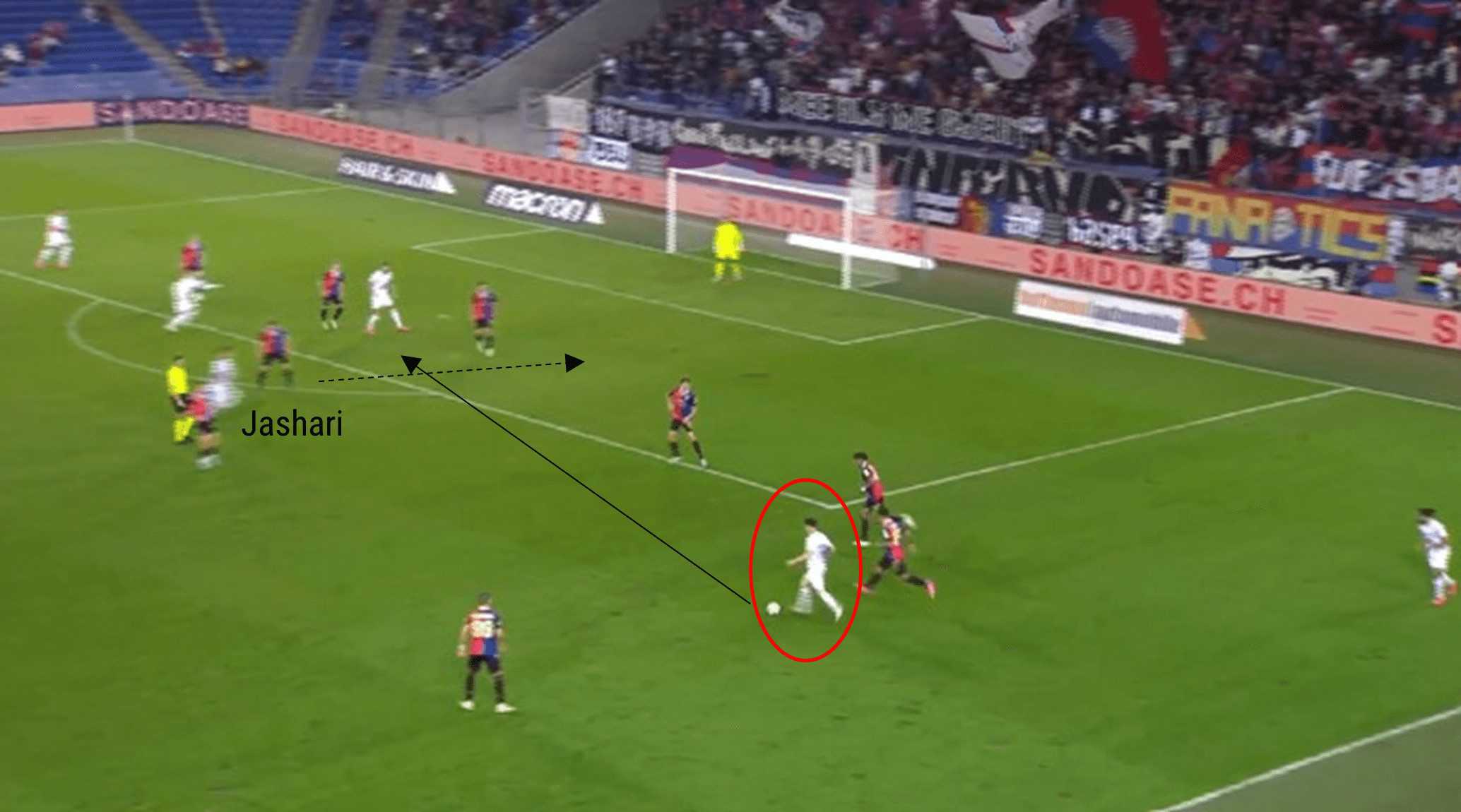
The above image shows nine outfield Basel players, but Luzern are able to find space to pass the ball into the penalty box and bypass seven of those nine players. Moreover, Ardon Jashari makes a run into the area, exploiting the space left by the Basel defence.
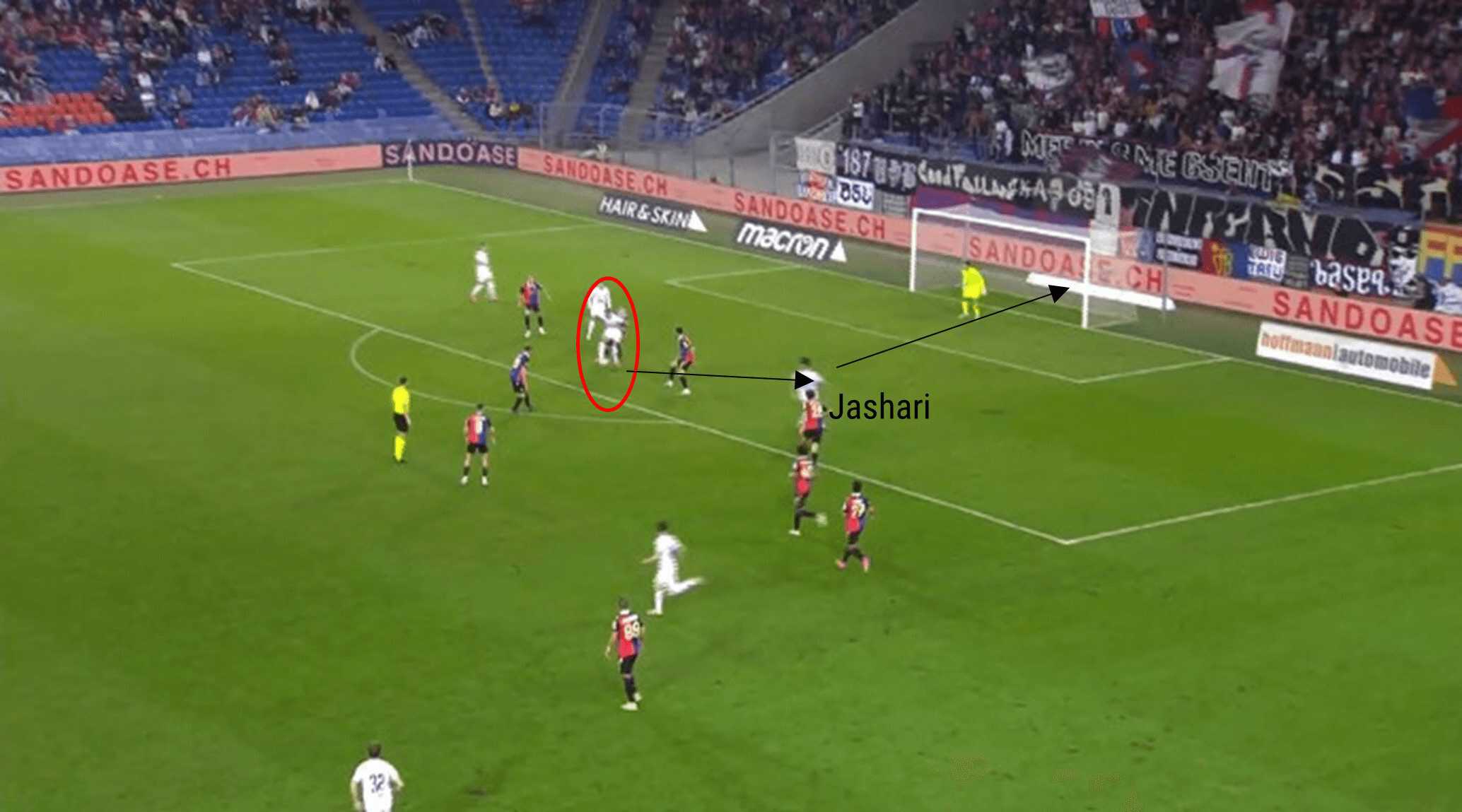
A first-time ball is then played to the unmarked Jashari, who fires an effort at goal and subsequently scores. It suggests Basel has lacked leaders this season to organise the off-the-ball shape and movement. The defence seemingly switched off here, which the opposition took advantage of. More communication was needed within the side in this case to track the run of Jashari.
The Swiss side has also lacked discipline and aggression in defence at times this season, which has contributed to them conceding soft goals. Basel have conceded four penalties so far this season, three of which have been converted. This is the joint second-highest tally in the division.
A further weakness has been conceding from corners.
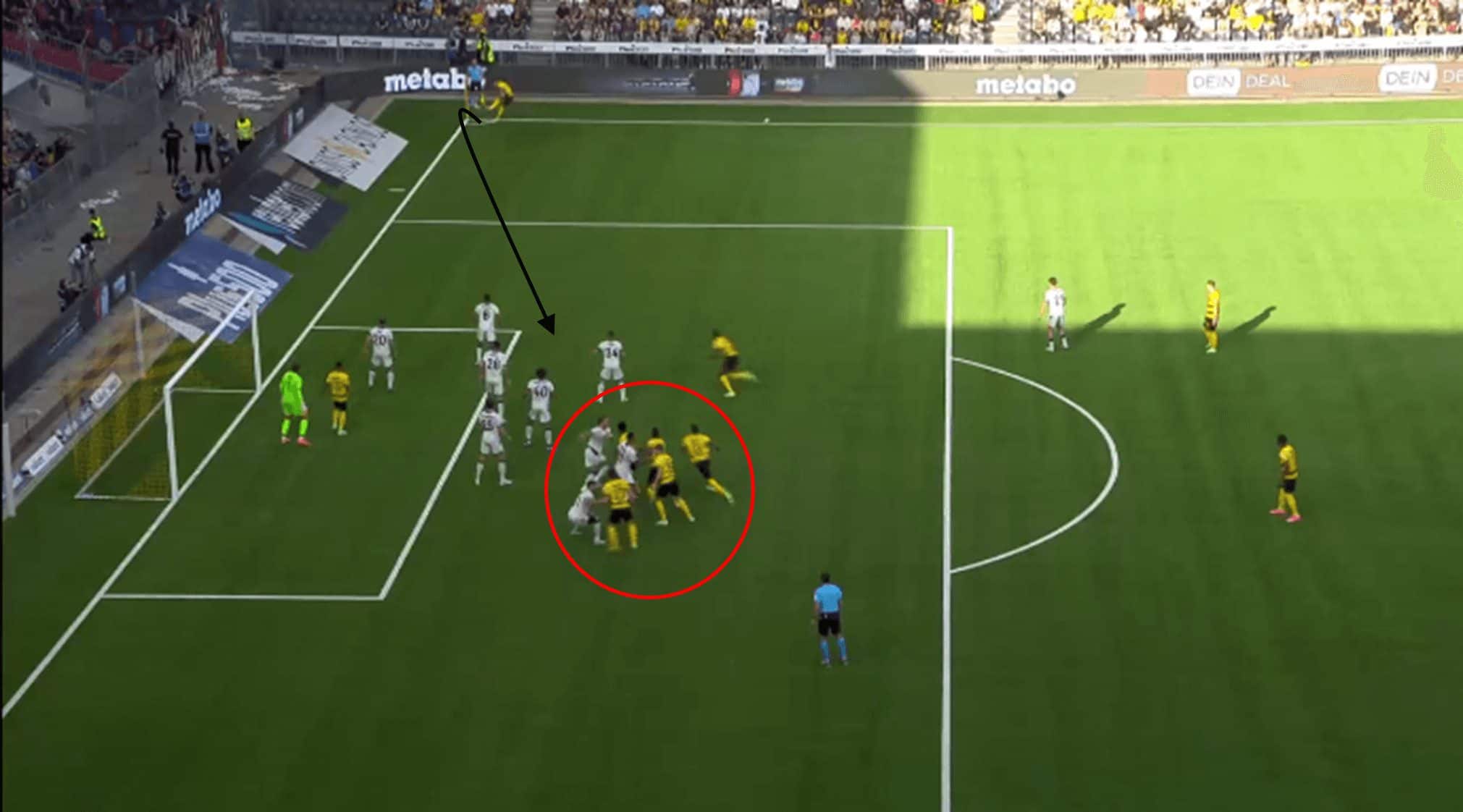
Basel has set up zonal marking, but a cluster of players are man-marking centrally in the penalty area. Basel are outnumbered, however, in this particular area of the box. Jean-Pierre Nsame shows more desire to get to the ball and heads his side into the lead.
Conceding such cheap goals suggests Basel lacked absolute authority at the back this season. They are currently the only side in the division yet to record a clean sheet. Although they currently have a mounting injury list, a greater deal of organisation and more fight is undoubtedly needed if this weakness is to be rectified.
Conclusion
In this tactical analysis, we have seen how poor Basel has been leaking goals this season and indeed, at the beginning of this campaign, it was their downfall, considering they were scoring regularly. Celestini ensured that their recent goal drought came to an end, but Basel are going to have to improve their end product on a consistent basis if they are to lift themselves out of the relegation zone.
This analysis has shown that this young Basel side has lacked confidence, but they have shown this season that they possess qualities to cause real problems. Last month, Basel struggled to really impose a tactical identity. Celestini needs to incorporate some fight and leadership, particularly in the backline, if they are to have any hope of beating the drop.






Comments